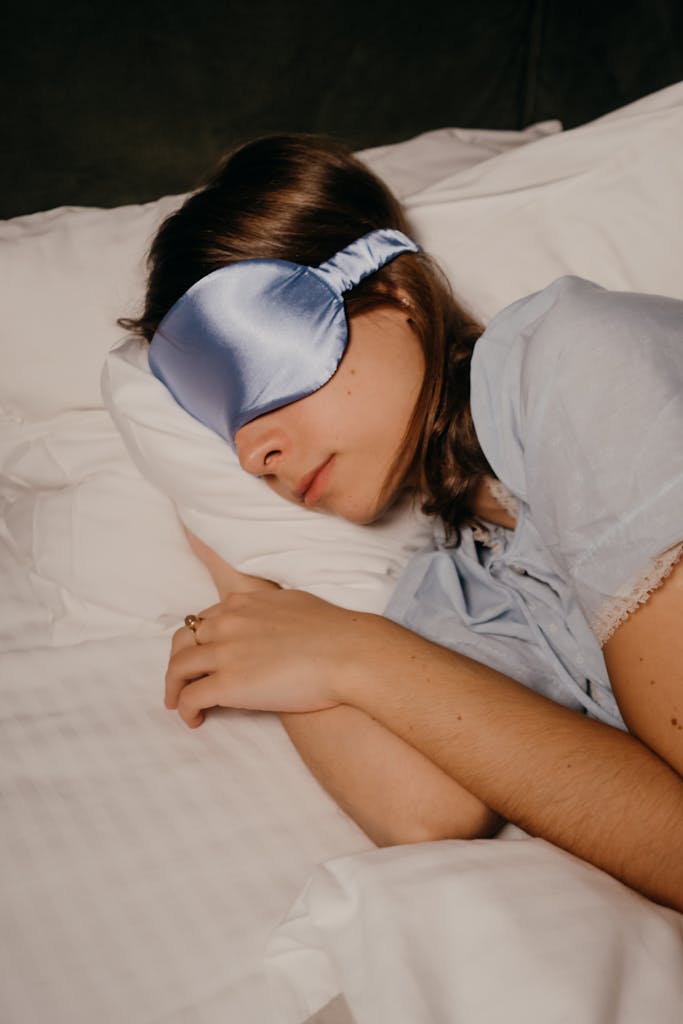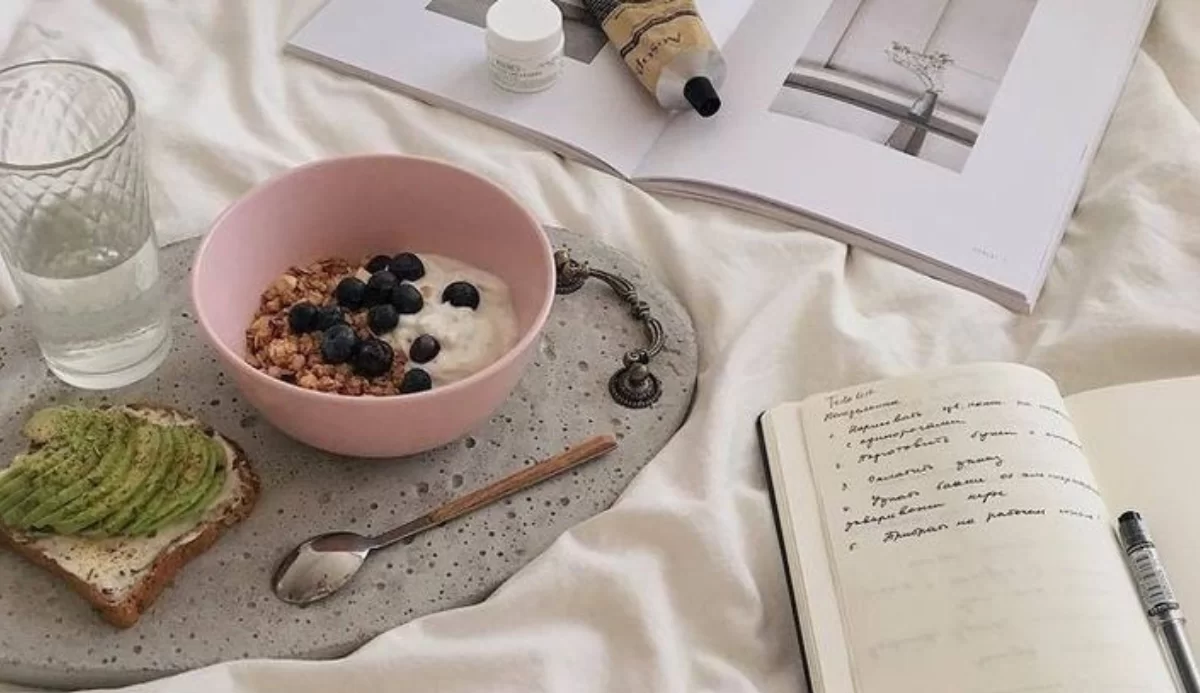
You’ve likely spent another night staring at the ceiling, wondering why sleep feels impossible when you’re absolutely exhausted. Trust me, I’ve been there – lying awake at 2 AM, mentally calculating how many hours I’ll get if I fall asleep “right now.” The good news? There are eight proven strategies that can transform your nights from restless wrestling matches into actual restorative sleep. Let me share what finally worked for me.
Key Takeaways
- Maintain a consistent sleep schedule by going to bed and waking up at the same time daily, even on weekends.
- Create an optimal sleep environment with cool temperatures (65-68°F), blackout curtains, and minimal noise disturbances.
- Establish a relaxing bedtime routine starting 30-60 minutes before sleep with calming activities like reading or gentle stretching.
- Limit electronic devices 1-2 hours before bedtime to avoid blue light exposure that disrupts melatonin production.
- Avoid caffeine, heavy meals, nicotine, and alcohol close to bedtime as they interfere with sleep quality.
Establish a Consistent Sleep Schedule
While your internal clock might feel more like a broken grandfather clock that chimes at random hours, establishing a consistent sleep schedule is actually one of the easiest ways to improve your sleep quality. You’ll want to pick a specific bedtime and wake time, then stick to them religiously—yes, even on weekends when Netflix is calling your name.
This consistency reinforces your circadian rhythm, which controls when you naturally feel sleepy or alert. Aim for 7-8 hours of sleep duration each night, so if you need to wake up at 6 AM, you should go to bed by 10 PM. These steady sleep habits will help you go to sleep faster and sleep well consistently. Maintaining this routine also helps you avoid “social jetlag”, which occurs when your weekend sleep patterns differ significantly from your weekday schedule.
Create an Optimal Sleep Environment
Once you’ve mastered the art of going to bed at the same time every night—and yes, I’m talking to you, person who sets seventeen alarms—it’s time to turn your bedroom into a sleep sanctuary instead of the chaotic multipurpose room it probably is right now.
Your bedroom environment needs four power moves to crush sleep problems:
Transform your bedroom into a sleep-crushing fortress with these four game-changing environmental tweaks that actually work.
- Control bedroom temperature between 65-68°F because your body craves that comfortable temperature for deep sleep
- Block light exposure with blackout curtains or an eye mask to create total darkness
- Eliminate sound disturbances using a white noise machine or earplugs
- Invest in a comfortable mattress that supports your spine properly
Reserve your bedroom only for sleep and intimacy—no laptops, no Netflix marathons. This relaxing bedtime approach trains your brain to associate bed with sleep, not doom-scrolling. Consider adding scented candles with calming fragrances like lavender to create a peaceful atmosphere that signals your body it’s time to wind down.
Develop a Relaxing Bedtime Routine
You’ll want to start winding down about 30 to 60 minutes before you actually plan to hit the pillow, giving your brain enough time to shift from “Netflix binge mode” to “sleepy time mode.”
This isn’t the moment to tackle your taxes or scroll through social media – instead, you’re looking for activities that’ll make your nervous system say “ahh” rather than “ahhh!” Think warm baths, gentle stretching, or reading something that won’t keep you up wondering if the main character survives until chapter twelve.
Consider dimming your regular lights and lighting some natural soy candles to create a peaceful atmosphere that signals to your body it’s time to prepare for rest.
Start 30-60 Minutes Early

Starting your bedtime routine 30-60 minutes before you actually want to fall asleep is like giving your brain a friendly heads-up that it’s time to start powering down. This intervening period helps you wind down naturally instead of expecting your mind to flip from “Netflix binge mode” to “sleepy time” instantly.
- Creates mental space between your day’s stress and bed
- Allows relaxing activities like reading or stretching to work their magic
- Reduces reliance on electronic devices that keep you wired
- Establishes consistent timing that your body learns to expect
Think of it as a soothing runway for sleep rather than an emergency landing. Your routine becomes more effective when you’re not rushing through activities just to collapse into bed exhausted.
Choose Calming Activities
The activities you choose during your bedtime routine can make or break your journey to dreamland, and trust me, scrolling through TikTok at 11 PM isn’t doing you any favors. You need to deliberately choose calming activities that’ll help you sleep better, not keep your brain wired like you’ve chugged three espressos.
Reading a book works wonders for most people, while meditation and deep breathing exercises can calm the mind faster than you’d expect. Soothing music is another powerful tool in your relaxation techniques arsenal. I’ve found that light stretching or taking a warm bath signals my body it’s time to shut down. The key is experimenting with different bedtime habits until you find what clicks for your routine, then sticking with it religiously.
Limit Electronic Device Usage Before Bed
While scrolling through your phone at 11 PM might feel like the perfect way to unwind, those glowing screens are actually sabotaging your sleep in ways you probably don’t realize. Blue light from electronic devices tricks your brain into thinking it’s daytime, suppressing melatonin production and throwing your sleep-wake cycle completely off track. Those constant notifications keep your mind buzzing when it should be powering down.
Take control by implementing these screen-time boundaries:
- Power down all devices 1-2 hours before bedtime
- Enable “night mode” and “do not disturb” features
- Replace scrolling with relaxing activities like reading physical books
- Create a consistent, screen-free pre-bed routine
Your future well-rested self will thank you for choosing non-stimulating activities that actually help you wind down. By establishing healthy evening habits, you’ll also be supporting your circadian rhythm, which thrives on consistency and directly impacts your morning energy levels.
Watch Your Diet and Substance Intake

What you put into your body in the hours before bed can make the difference between drifting off peacefully and staring at the ceiling until 3 AM. Heavy meals, caffeine, nicotine, and alcohol are sleep’s biggest enemies when consumed close to bedtime.
| Sleep Disruptors | Impact on Your Rest |
|---|---|
| Heavy meals | Digestive system works overtime |
| Caffeine | Stimulants keep mind racing |
| Nicotine | Takes hours to wear off |
| Alcohol | Causes middle-of-night wake-ups |
| Late-night snacking | Disrupts natural sleep cycles |
These stimulants can seriously disrupt sleep quality and mess with your sleep patterns. Instead, eat and drink in moderation during evening hours. Consider sipping on calming beverages like lavender lemonade or chamomile-based drinks that can help your body naturally wind down. Pay attention to how different foods affect your individual sleep—you’ll quickly identify what works.
Exercise Regularly at the Right Time
Moving your body regularly can work wonders for your sleep, but timing matters more than you might think. I learned this the hard way after doing jumping jacks at 10 PM and wondering why I felt wired until midnight. The Health benefits of exercising within your day are incredible for quality sleep, but you’ve got to be strategic about it.
Here’s how to time your workouts for better sleep:
- Morning workouts – Get that good energy boost and natural light exposure
- Afternoon sessions – Perfect for strength training around 2-4 PM
- Early evening – Light yoga or stretching works well
- Avoid intense exercise – No high-intensity workouts 3-4 hours before bedtime
For those looking for a simple, sleep-friendly routine, try incline walking on a treadmill for 30 minutes at a 3% grade – it’s gentle enough for evening workouts while still providing excellent health benefits. When you go for better sleep through exercise, you’re investing in your overall Health and well-being.
Manage Stress and Worries

Nearly 70% of adults report that stress keeps them awake at night, and I’m definitely part of that club. When your mind’s racing about tomorrow’s presentation or that unpaid bill, falling asleep becomes impossible. I’ve learned that stress management isn’t just good for mental health—it’s vital for healthy sleep habits.
Stress Busters | Timing | My Go-To Example
—|—|—
Worry time | 6 PM daily | Write down 3 concerns, then close notebook
Relaxing tasks | 30 mins before bed | Light stretching or reading fiction
Mindfulness practice | In bed | 4-7-8 breathing technique
These strategies help with falling asleep faster by creating mental distance from stress. When sleep problems persist, addressing underlying anxiety becomes essential for developing sustainable, healthy sleep habits. A gradual wind-down method that includes dimming lights 2 hours before bed and avoiding screens 1 hour before bedtime can lead to noticeable improvements in sleep quality within just a week.
Optimize Your Daytime Habits
Your daytime choices can make or break your nighttime sleep, and I learned this the hard way after years of wondering why I’d toss and turn despite feeling exhausted. Getting bright light in your eyes within the first hour of waking helps set your internal clock, while that afternoon nap you’re craving needs some serious ground rules if you don’t want it sabotaging your bedtime.
Let’s talk about how to work with your body’s natural rhythms instead of against them, because trust me, your future well-rested self will thank you. Consider creating a morning sanctuary that feels nurturing and peaceful, as this gentle start can positively influence your entire day and ultimately support better sleep patterns.
Morning Light Exposure

When I first learned that stumbling around like a zombie each morning wasn’t actually normal, I discovered the game-changing power of morning light exposure. Your circadian rhythm craves that natural light to regulate your sleep-wake cycle properly. I found that just 30 minutes of morning sunlight transforms your entire day, boosting melatonin production for better sleep quality tonight.
Step outside within 30 minutes of waking – even cloudy days provide enough natural light. Face east toward the sunrise for maximum bright light exposure benefits. Use a light therapy lamp indoors when weather doesn’t cooperate. Sit near sunny windows while drinking your morning coffee.
This simple habit suppresses daytime melatonin, helping you feel alert and energized naturally.
Strategic Napping Guidelines
Although I used to think naps were just for toddlers and my grandmother, I learned the hard way that strategic daytime napping can actually rescue your sleep schedule instead of sabotaging it. The key is keeping your naps limited to 30 minutes max, which prevents disrupting your natural sleep-wake cycle.
I discovered that timing matters enormously – napping late in the day turned me into a night owl who couldn’t fall asleep until 2 AM. However, if you’re pulling night shifts, a carefully timed afternoon nap can help tackle sleep debt without ruining your quality rest later. Recall, poorly planned naps will sabotage your bedtime, but strategic ones become your secret weapon for better sleep.
Conclusion
You’ve got the tools now, so there’s no excuse for tossing and turning like a rotisserie chicken. Start with just one or two tips—don’t overwhelm yourself by changing everything overnight. I’d suggest tackling your sleep schedule first, then maybe ditching that phone scrolling habit. Trust me, your future well-rested self will thank you when you’re not chugging your third coffee by 10 AM tomorrow.
Comments
-
Pingback: 20 Easy Ways to Start Living Green Today
-
Pingback: 10 Morning Habits That Changed My Life
-
Pingback: How to Achieve Glowy Skin Naturally
-
Pingback: 25 Healthy Habits to Start This Week





Pingback: 6 Sleep Habits for Your Best Life